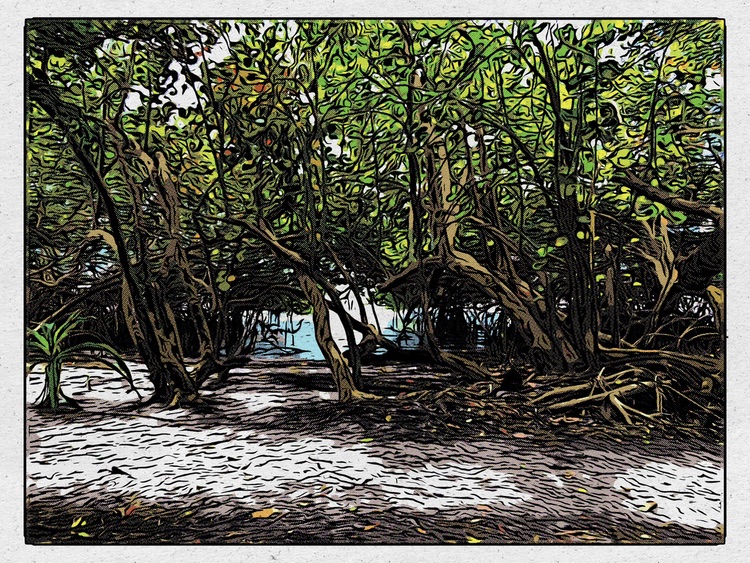It is not speaking that breaks our silence, but the anxiety to be heard.
~ Thomas Merton
slip:4a1505.
It is not speaking that breaks our silence, but the anxiety to be heard.
~ Thomas Merton
slip:4a1505.
Education is when you read the fine print. Experience is what you get when you don’t.
~ Pete Seeger
slip:4a1505.
Go confidently in the direction of your dreams! Live the life you’ve imagined. As you simplify your life, the laws of the universe will be simpler.
~ Henry David Thoreau
slip:4a1504.
I cannot believe that the inscrutable universe runs on an axis of suffering; Surely the strange beauty of the world must somewhere rest on pure joy!
~ Louise Bogan
slip:4a1503.
Grandiose fantasies are a symptom of Resistance. They’re the sign of an amateur. The professional has learned that success, like happiness, comes as a by-product of work. The professional concentrates on the work and allows rewards to come or not com, whatever they like.
~ Steven Pressfield
slip:4a1502.
One hour of thoughtful solitude may nerve the heart for days of conflict—girding up its armor to meet the most insidious foe.
~ Percival
slip:4a1501.

I really enjoyed Curtis Cates’s episode 14, Transformation can be fun…!.
Lately, I’ve been back to my regular walking, and I’ve started getting serious listening time in. I was delighted to get a chance to hear from Curtis.
(Yes, yes, I’m way waay behind on the Hansel & Gretel Code.)
Like you, my to-listen-to podcast cup runeth over! I’m regularly adding newly-released episodes. But I also have a way of systematically looking through shows’ entire back-catalog. So I’m also, regularly adding very-old episodes.
Yikes!
…and I heard one of Curtis’s sound-bites as I typed that.
Anyway, if you’re already familiar with Curtis’s work, drop back into ep14 of H&G, just for fun. If you’re going “Curtis who?” … start below. And, you’re welcome!
art is personal
~ Curtis Cates, from Kristo.art
and what qualifies or disqualifies something as art is all up to you
ɕ
PS: I don’t subscribe to shows; I add episodes one-by-one when I see interesting episodes via my daily RSS-feed reading.
Do not weep; Do not wax indignant. Understand.
~ Baruch Spinoza
slip:4a1500.
Spending time in solitude with your artist child is essential to self-nurturing. A long country walk, a solitary expedition to the beach for a sunrise or sunset, a sortie out to strange church to hear gospel music, to an ethnic neighborhood to taste foreign sights and sounds—your artist might enjoy any of these. Or your artist might like bowling.
~ Julia Cameron
slip:4a1499.
To live a creative life, we must lose our fear of being wrong.
~ Joseph Chilton Pearce
slip:4a1498.
Individuals who are realized in their own lives almost never criticize others. If they speak at all, it is to offer encouragement. Watch yourself. Of all the manifestations of Resistance, most only harm ourselves. Criticism and cruelty harm others as well.
~ Steven Pressfield
slip:4a1497.
It is all very well to insist that man is a “social animal”—the fact is obvious enough. But that is no justification for making him a mere cog in a totalitarian machine—or in a religious one either, for that matter. In actual fact, society depends for its existence on the inviolable personal solitude of its members. Society, to merit its name, must be made up not of numbers, or mechanical units, but of persons. To be a person implies responsibility and freedom, and both these imply a certain interior solitude, a sense of personal integrity, a sense of one’s own reality and of one’s ability to give himself to society—or to refuse that gift.
~ Thomas Merton
slip:4a1496.

I have written about this before and it is something I wish to emphasize repeatedly: efficiency and clarity are necessary elements, but are not the goal. There needs to be space for how things feel. I wrote this as it relates to cooking and cars and onscreen buttons, and it is still something worth pursuing each and every time we create anything.
~ Nick Heer, from Delicious Wabi-Sabi
slip:4upobo3.
Yes, “efficiency and clarity are necessary elements, but are not the goal. There needs to be space for how things feel.” Hear! Hear!
There are at least three reasons to read Heer’s points. Retro-digital photography is really a thing; the Japanese concept of wabi-sabi (appreciating beauty that is imperfect, impermanent, and incomplete); A bit of hist wondering about software.
It’s the wabi-sabi that got me thinking about podcasting. I’m well-known for cutting the corner when it comes to editing the conversations I record. I’ve always looked at that as a necessity: If I tried to raise the level of quality by editing, I’d not be able to put the episodes out (or at least not as many.)
After reading Heer’s thoughts, now I’m wondering if I’m also—perhaps even more so?—drawn to the wabi-sabi of the conversations with all their blemishes, false-starts, uhm-and-ahs in place.
ɕ
The creation of something new is not accomplished by the intellect but by the play instinct acting from inner necessity. The creative mind plays with the objects it loves.
~ Carl Jung
slip:4a1495.
Boredom is just “What’s the use?” in disguise. And, “What’s the use?” is fear, and fear means you are secretly in despair. So put your fears on the page. Put anything on the page. Put three pages of it on the page.
~ Julia Cameron
slip:4a1494.
I mentioned this book previously (in, Driveway Moments). As I read more, it became clear this book is stuffed full of useful information for podcasters. At some point, I’ll get around to organizing some sort of “resources” something-or-other over on the Podcaster Community, and Sound Reporting will definitely go in the “must read” books list for podcasters.
Almost nothing in the book is directly usable… but there’s a ton of stuff—far too much for me to quote—that I found made me think.
To be honest, a lot of it felt like, “yes, I agree” and “yes, I learned that the hard way.” But there was also a lot of “that’s a good idea” and “yikes, now I know I don’t want to do that that way.”
These chapters were particularly fertile ground: Writing for Broadcast, Story Editing, Reading on the Air, Hosting, and Booking. They contains tons of information from the professionals.
ɕ
The most potent muse of all is our own inner child.
~ Stephen Nachmanovitch
slip:4a1493.
Procrastination is the most common manifestation of Resistance because it’s the easiest to rationalize. We don’t tell ourselves, “I’m never going to write my symphony.” Instead we say, “I’m going to write my symphony; I’m just going to start tomorrow.”
~ Steven Pressfield
slip:4a1492.
Solitude bears the same relation to the mind that sleep does to the body. It affords it the necessary opportunities for repose and recovery.
~ William G. Simms
slip:4a1491.
Painting is just another way of keeping a diary.
~ Pablo Picasso
slip:4a1490.